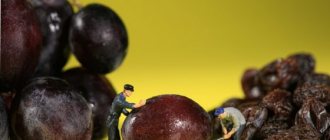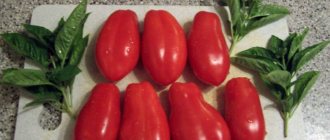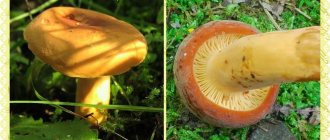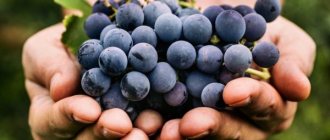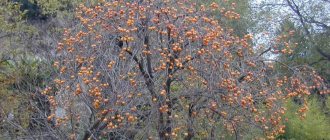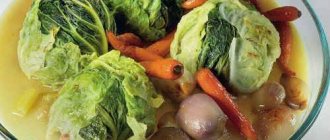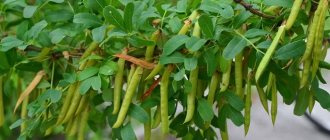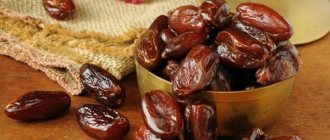The Lady's Fingers grape is considered one of the best table grapes in the history of viticulture. Despite the emergence of new interesting varieties, “Lady's fingers” do not lose their relevance. Gardeners value these grapes for their extraordinary taste and original shape of the berries.
grape variety "Lady fingers"
Lady's fingers grapes serve as raw materials for raisins, since they have no seeds
The Lady's Fingers grape variety is in demand and popular in the retail industry
General description of grapes
Lady fingers grapes are easily recognized by the characteristic shape of the berries. The clusters of this variety are very appetizing and beautiful. Let's find out what else is remarkable about the famous variety.
Bunches
The brushes of Lady Fingers are loose and quite large. Shape – conical or cylindrical. Bunch parameters:
- length – 20-50 cm;
- width – 10-25 cm;
- weight – 500-600 g.
The comb is fragile and herbaceous.
Berries
The fruits are large, elongated, cylindrical, yellow-green in color. The pulp is transparent. When ripe, the grapes acquire a light pink blush. Berry parameters:
- length – 2.5-4 cm;
- width – 1.5-2.5 cm;
- weight – 5-7 g.
The skin is thin, elastic, with a waxy coating. And most importantly, the fruits have practically no seeds.
Vine
Lady's finger bushes are vigorous and require support. The vine is powerful, thick and long. The branches can grow up to 5-6 m in length. The vine is covered with bright green leaves of medium size, they are 3 or 5 lobed, round in shape.
The underside of the leaves has a weak bristly edge, the edges of the leaves are slightly raised. Many shoots grow on the bushes, requiring regular removal.
Diversity of Husayn species
As in the distant past, the most popular grape varieties today remain from the lady's finger series. A bunch with long graceful berries is always at the top of demand. Merchants from Central Asia have always been one of the best traders; grapes from these places have always been and remain in a high price category and are sold out before others, even those that are no less tasty and attractive. Uzbek grapes, which bear the poetic name Husayne Kelim Barmak or Bride's Fingers are traditionally white, have several no less famous subspecies, in many ways even showing better qualities than their classic older relative:
- Husayne Kalta, a variety with emerald green berries, also similar to delicate fingers.
- Husayne Egri is distinguished by crescent-shaped, curved berries.
- The Husayne Lunda variety is characterized by small, elongated berries collected in medium-sized clusters.
- In addition to the white strains, pink and red Husaine, as well as many other forms, are widespread.
In the European part of our country, a special demand for such varieties appeared after information was disseminated at the official level about the Ladies fingers grapes, which were sectioned in distant Japan, known to us as Lady's finger. Its appearance is quite remarkable - long, elongated berries with red tips, very closely resembling an elegant female finger with a varnished nail. But in the regions of ancient agriculture of Uzbekistan, such grapes were known for a very long time, where they compared them to the delicate white fingers of a young bride. There are very few varieties that even today, in the age of abundance of a wide variety of hybrids, can compete on an equal footing with Bride’s Fingers. Why is the ancient vine still at the peak of popularity today?
What characteristics do lady fingers have?
The variety has excellent taste and product characteristics, but with other parameters, not everything is so smooth. These grapes are truly “capricious”; they need certain conditions to grow and bear fruit.
An overview of the Lady's Fingers grape variety is presented in the video below:
Ripening time
The variety belongs to the mid-late group. Ripening is quite long - 130-155 days pass from the beginning of flowering to the full ripening of the berries. In regions with short summers, the fruits do not have time to ripen. Even in Central Asia, the bunches ripen only by the beginning of September.
Fruiting dates
The variety produces its first harvest in the fourth year after planting. Full fruiting occurs in the fifth year of life. In order for the grapes to be ready for this process, they should be regularly fed with fertilizers.
Productivity
The productivity of "Khusayne Bely" is high, but not stable. This grape is very demanding. To get 40 tons of grapes from 1 hectare, you have to create ideal growing conditions.
Taste characteristics
The grapes are sweet, juicy, and crunch when bitten. "Husayne" was once considered the pinnacle of grape taste, and even now it is one of the most delicious grape varieties.
Lady finger fruits have a unique feature - although they are sweet, they perfectly quench thirst. The secret of this effect lies in the combination of low sugar content and low acidity of the berries. Sugar content is about 17%, with acidity - 4.5 g/l. When overripe, the fruits become bland.
Tasting taste rating: 8.5 on a 10-point scale.
Application and purpose
The variety is famous for its excellent taste - the berries are very tasty fresh. “Khusayne White” is a drying variety and is ideal for preparing raisins. “Lady fingers” can also be used to produce wine, juices, compotes, and marinades. The variety is good for decoration.
Regionality
The variety is widespread in its homeland - in Uzbekistan and other Central Asian countries. “Husayne White” is grown wherever there are suitable conditions for its growth:
- on the Crimean peninsula;
- in the south of Russia;
- in the Caucasus and other regions with warm winters and long summers.
It is difficult to grow this variety in central Russian latitudes due to cold winters and short summers. Only the most faithful and patient fans of this variety can grow Lady's Fingers in such difficult conditions.
Features of pollination
The variety is self-fertile - it has bisexual flowers, so there is no need for additional pollination.
Frost resistance
The variety is not frost-resistant, and this predetermines its limited distribution area. The bushes can withstand temperatures down to minus 10-15 °C. This grape definitely requires shelter if frosts in the place of growth exceed the specified mark.
Drought resistance
The variety does not tolerate drought well. “Lady fingers” is a capricious variety, and providing water is the main condition for its fruiting. Due to its low drought resistance, the variety requires regular watering. But excessive waterlogging is also dangerous for the variety - rot can develop.
Resistance to diseases and pests
The variety has low disease resistance - 1-1.5 points out of 10. To grow a crop, you need prevention and treatment, as well as regular fertilizing - root and foliar. Potassium and phosphorus fertilizers are especially useful in resisting diseases and pests.
Like all Central Asian varieties, Lady's Fingers have poor resistance to fungal infection. These grapes are affected by oidium, mildew, and various parasites.
Chemical composition, calorie content per 100 g, nutritional value, glycemic index
The characteristics of the grapes vary depending on the variety, but the set of main components is almost the same. This:
- vitamins (group B, but there is also ascorbic acid);
- sugar (mostly glucose);
- minerals (iron, copper, calcium, magnesium, chromium, iodine);
- organic acids (for example, citric, malic);
- tannins.
Calorie content (energy value) 100 g of dark grapes - from 60 to 70 kcal, light - 40 kcal.
The glycemic index (an indicator of the rate at which the amount of glucose increases in the body after consuming a product) for grapes ranges from 45 to 55 units.
GI is high, low and medium. Our grapes are included in the “middle group”.
Nutritional value of 100 g of product – 15.4 g of carbohydrates, 0.6 g of proteins and fats, dietary fiber – 1.6 g.
The video will tell you about the calorie content, harm and benefits of grapes for the body:
Advantages and disadvantages
Despite its shortcomings, “Husayne White” has remained the most popular variety for several centuries. For the sake of its magnificent, sweet, crunchy berries, gardeners are willing to put up with the difficulties of growing it.
Advantages:
- high taste characteristics;
- spectacular appearance of bunches;
- lack of seeds;
- possibility of making raisins;
- high productivity;
- self-pollinating;
- good transportability;
- the clusters are well preserved on the vine.
Flaws:
- Low frost resistance - the variety is difficult to grow in temperate climates. Shelter for the winter is necessary even in the southern regions of the Russian Federation.
- Berries are not suitable for long-term storage.
- Low resistance to disease, susceptible to attacks by parasitic insects.
- Low precociousness.
- Demanding on growing conditions - climate, care, etc. For the berries to be sweet, the variety needs a lot of heat and sun.
Landing dates
An important advantage of “Lady Fingers” is the possibility of planting at any time, except winter. The exact planting date depends on the climate and the method of propagation of grapes.
The following periods are suitable for planting dormant seedlings and cuttings:
- early and mid-spring;
- mid-October.
Green seedlings with leaves and shoots are planted when stable spring warmth, or even summer, sets in.
If we are talking about grafting cuttings, then this can be done in the middle or at the end of spring - having adapted, they will grow intensively and be well strengthened by autumn.
“Lady fingers” are also propagated by offsets at any time – in spring or autumn. The offsets quickly take root and can be replanted as full-fledged bushes.
How to plant grapes?
Planting technology depends on the chosen method of propagation. Let's consider planting Lady's Fingers grapes with seedlings and grafting.
Seedlings
The procedure for planting seedlings:
- Dig a hole 80-90 cm deep.
- Place crushed stone, gravel, broken brick at the bottom - a drainage layer.
- Fill it 1/3 with soil mixture - mix fertile soil in equal parts with compost, add a little superphosphate, potassium and nitrogen fertilizers (30-50 g each).
- Add another layer of soil on top of the fertilizer so that the roots of the seedling do not get burned.
- Prepare supports in advance - pillars with trellises.
- Now take a break - for a couple of weeks, let the earth settle. If the pits are prepared in the fall, they will remain in place until spring.
- When the time comes for planting (the ground has warmed up to +10 degrees), immerse the roots of the seedlings in water for 3-4 days.
- Carefully lower the seedling into the hole, with its roots on the fertile soil, and pour in a bucket of water to compact the soil.
- Cover the roots of the seedling with soil. Compact it with your hands and water again. A couple of buckets of water is enough.
- Place a support near the seedling - on the north side, so that the bush does not trail along the ground.
The root collar of the seedling must remain above the soil level - it is strictly prohibited to fill it up.
Vaccination
Grafting is a simple and economical way to propagate grapes, but to implement it you need to have old grape bushes that will be used as rootstocks.
Vaccination procedure:
- Prepare cuttings for grafting - this is done in early spring or autumn. The optimal number of eyes is 2-3 pieces.
- Cut the lower part into a wedge shape on both sides.
- Before grafting, cuttings, like seedlings, are immersed in water for several days.
- Prepare the rootstock - cut off the old bush, leaving a stump 10 cm high. Split it exactly in the middle so that the cutting can be inserted into the resulting gap.
- Place the cutting into the prepared split with the wedge-cut part. Pull the split tightly and cover it with clay.
- Water the rootstock well - with three buckets of water.
- Build a support for the future bush. Feed the bush and mulch the soil with humus, a circle near the trunk.
How to care for lady fingers?
The variety is very demanding of care - lady fingers need the whole range of caring measures for successful fruiting.
Moisture
Water is the main requirement for the Lady Fingers variety. It is especially important to water the bushes after hibernation, during and after flowering. During drought, increase the rate and frequency of watering. After the ovaries form, moisture is reduced.
Feeding
Principles of feeding “Lady fingers”:
- At the beginning of the growing season, nitrogen fertilizers are applied. This feeding has a beneficial effect on shoot growth and helps the plant prepare for fruiting.
- In spring and summer, potassium and phosphorus fertilizers are applied - they are important for the formation of bushes.
- If the bushes lag behind in development, foliar feeding is used - spraying with liquid fertilizers.
Top dressing for grapes - timing and dosage:
| Type of feeding | When to apply/spray | Composition (doses are given for 1 sq. m) |
| Under the root | half a month before flowering | Nitrophoska – 50 g. |
| Spraying | two days before flowering | For 10 l:
|
| Under the root | half a month after flowering | Nitrophoska – 40-60 g. |
| Spraying | at the stage of formation of small berries | For 10 l:
|
| Under the root | a week before harvest | For 10 l:
|
| Under the root | maturation period | For 10 liters - infusion of ash with microfertilizers (1-2 tablets). |
| Under the root | after harvest | For 10 l:
|
Trimming
The peculiarity of the variety is the small number of fruiting shoots. Therefore, the main task of care is to trim the bushes on time and correctly. Trimming rules:
- The shoots have a low level of fruitfulness, so long pruning is used, shortening the shoots by 4-10 buds.
- The shoots intended for fruiting must not be damaged. They are left only if they are fully ripe - stretched to their full length.
- Preference is given to medium-sized stems - in adult bushes they reach a thickness of 1 cm. Thicker shoots bend poorly and can break, and fruit buds do not grow well on them. Branches thinner than 1 cm are weak and do not have sufficient nutritional reserves.
- When pruning, be careful - any damage can lead to the formation of wounds that will not heal on perennial branches.
- To calculate how many shoots to leave on a bush, count the eyes. For 1 sq. It is recommended to leave 8-12 eyes.
Gardeners argue about how many eyes to leave on a bush. Some believe that there should be more of them - to compensate for possible losses after frosts. Others, on the contrary, are sure that the reserve left makes pruning more difficult, since many shoots appear from the lateral and dormant buds.
Principles of pruning technique:
- Make the cut perfectly even - use a sharpened pruner.
- Trim old branches at right angles so that the cutting area is small.
- When trimming old stems, try to move away from the base.
- When pruning young shoots, step back 1-3 cm from the lower eye.
Insulation
Before covering the grapes, carry out moisture recharging - 2-3 days before insulation. Dry soil freezes deeper and faster than wet soil. Watering increases the heat capacity of the earth. For each year of the bush’s life – 2 buckets of water.
Covering order:
- To prevent the vine from rotting from contact with wet soil, spruce branches or wooden boards are placed under it. Do not place thermal insulation material on the ground. In winter, heat comes from the ground, preventing the vine from freezing.
- The branches are tied into bundles with synthetic rope or soft wire. Do not tighten too much - you can damage the shoots.
- The vine is laid and fixed with staples so that there is 10 cm to the soil.
- The insulation is used dry and disinfected. To repel mice, use tansy, wild rosemary, calendula or wormwood. The grass is laid between layers of insulation.
For “Lady Fingers” who are afraid of the cold, a full cover is recommended, which provides two options:
- tunnel - agrofibre or other covering material is placed on a frame of arcs;
- sandwich - covering material is applied to the vine in several layers.
Pest and disease control
Susceptibility to fungal diseases is one of the main disadvantages of the variety. Most often, “Lady fingers” are affected by the following diseases:
- oidium (powdery mildew);
- mildew.
A characteristic sign of powdery mildew is the smell of rotten fish.
The most dangerous pests for lady fingers:
- thrips;
- aphid;
- phylloxera;
- leaf roller;
- spider mite.
Measures to combat lady finger diseases:
| Diseases and pests | Symptoms and harm | How to fight? |
| Oidium | The disease can take up to 80% of the crop. A dirty gray powdery coating forms on the shoots and leaves. Unopened inflorescences die, and the berries stop growing and dry out. |
|
| Mildew | Appears in wet weather. Yellow oily spots appear on the above-ground parts. The vine dries and falls off, unripe berries rot, and ripe ones become sour. |
|
Pest control measures:
- timely destruction of weeds, loosening and annual digging of the soil;
- cleaning bushes from old bark in the spring (the removed bark is burned);
- uprooting and destroying diseased bushes;
- if the plantings are attacked by phylloxera, grapes are not planted in this place for 20 years;
- preventive treatments against aphids, weevils, leaf rollers, mites, thrips - bushes are sprayed with Actellik, Fufanon, Aktara;
- Spraying with Confidor and Karate helps against phylloxera and leafhoppers;
- “Mukhoed”, “Zemlin” and “Bazudin” help against beetles and cutworms - the granules are scattered between the rows for digging.
Spraying regime - 2-3 times at intervals of 10 days. The last spraying is carried out 3 weeks before harvest, no later.
A popular method of fighting spider mites is garlic infusion. Place 200 g of garlic on a bucket of water. A decoction of onion peels helps against the leaf roller.
Features of Classic Husayn
A wonderful strain of grapevine from sunny Uzbekistan in all respects is most often called Striped among our compatriots for ease of handling, because of the pattern visible in the thinnest stripes on the skin of the ripe berry. Thanks to its excellent taste and fleshy berries, the variety has become one of the most preferred by both gardeners and fruit sellers throughout the country. When deciding to plant seedlings in your own garden or vineyard, you need to carefully study all the priorities and negative aspects of the species. This is especially true for temperature and climatic conditions. Gardeners more or less familiar with geography know that the ancestral home of the variety is the fertile plains of Uzbekistan, flooded with natural light and warmth. Therefore, the varieties of grapes and fruits that came from there do not take root in all regions; the plants are very capricious to climatic conditions. The Khusayne Striped grape variety is exclusively a table grape, so the appearance and characteristics of the clusters are most interesting. The most significant for choosing this variety are the following technical characteristics of the bunch:
- Even when fully matured, the brush usually does not reach large sizes; the most common are medium ones, weighing from 650.0 to 1000.0 g.
- The Kelim Barmak bunch has a loose structure, which allows air to easily circulate around the berries.
- The shape of the bunch resembles a regular cylinder.
- The berries are large, fleshy, juicy, which is, in principle, characteristic of all Central Asian varieties, with thin delicate skin covered with a thick waxy coating of pruina.
- The color palette of the classic strain ranges from light green to yellow. With active exposure and direct sunlight, the fruits become almost transparent.
- The fruits have a perfectly balanced taste with medium sweetness and slight sourness. Sugar content up to 18% with acid content ranging from 4 g/l to 5 g/l.
- The tasting score for taste is one of the highest – 9.2 points.
Grapes, like all other Asians, have low immunity to fungi and are practically not protected from mildew, oidium, and parasites. Very low resistance to frost, requires shelter at temperatures around -15 0 C. The best method is to construct formwork around a woody fragment of a bush, which is then filled with a mixture of loose soil, chopped reeds and sawdust.
Sources:
https://selo.guru/sadovodstvo/vinograd/damskie-palchiki.html https://xn--80a1agch.xn—-7sbabggic4ag6ardffh1a8y.xn--p1ai/husajne.htm https://vinogradmoy.ru/sorta-vinograda /husayne-kelim.html
Reviews about the variety
★★★★★
Sushchenko V., Novocherkassk. Lady fingers are my favorite grape.
You have to really fight for the harvest - with birds, wasps, aphids, etc. To grow large clusters and protect the bushes from fungus, you need fertilizing, spraying, and watering. If you follow agricultural techniques, then there is nothing difficult in growing lady fingers. ★★★★★
Loiko R., Yeisk. I grow Husaine for raisins.
I’ve been doing this for a long time, so I’m familiar with all the problems of the variety. Today there are all the means to combat diseases and pests, so the pain that many amateur gardeners talk about is not an obstacle to growing this variety. I have never seen more delicious and beautiful grapes. Hide
Add your review
The famous variety “Lady's Fingers” is a classic of viticulture and the standard of grape taste. Unfortunately, this variety is difficult to grow in most of Russia - the winters are too cold and the summers are short. But gardeners in the southern regions, with proper care, can grow these incredibly tasty grapes.
0
0
Copy link
History of selection
“Lady fingers” have been grown by winegrowers in Central Asia for many centuries. It is assumed that this variety was obtained as a result of artificial selection after repeated sowing of wild grape seeds.
According to Chinese sources, grapes with oblong berries were brought to China from the valley of the Zarafshan River in the first centuries of our era.
Currently, it is actively grown in southern Russia, Crimea, Georgia, Uzbekistan, Tajikistan and other countries with warm climates.
In the middle Russian latitudes, due to its low frost resistance, it is grown only by true lovers of this ancient variety.
Among the heat-loving varieties, Hadji Murat, Cardinal and Ruta are also known.

